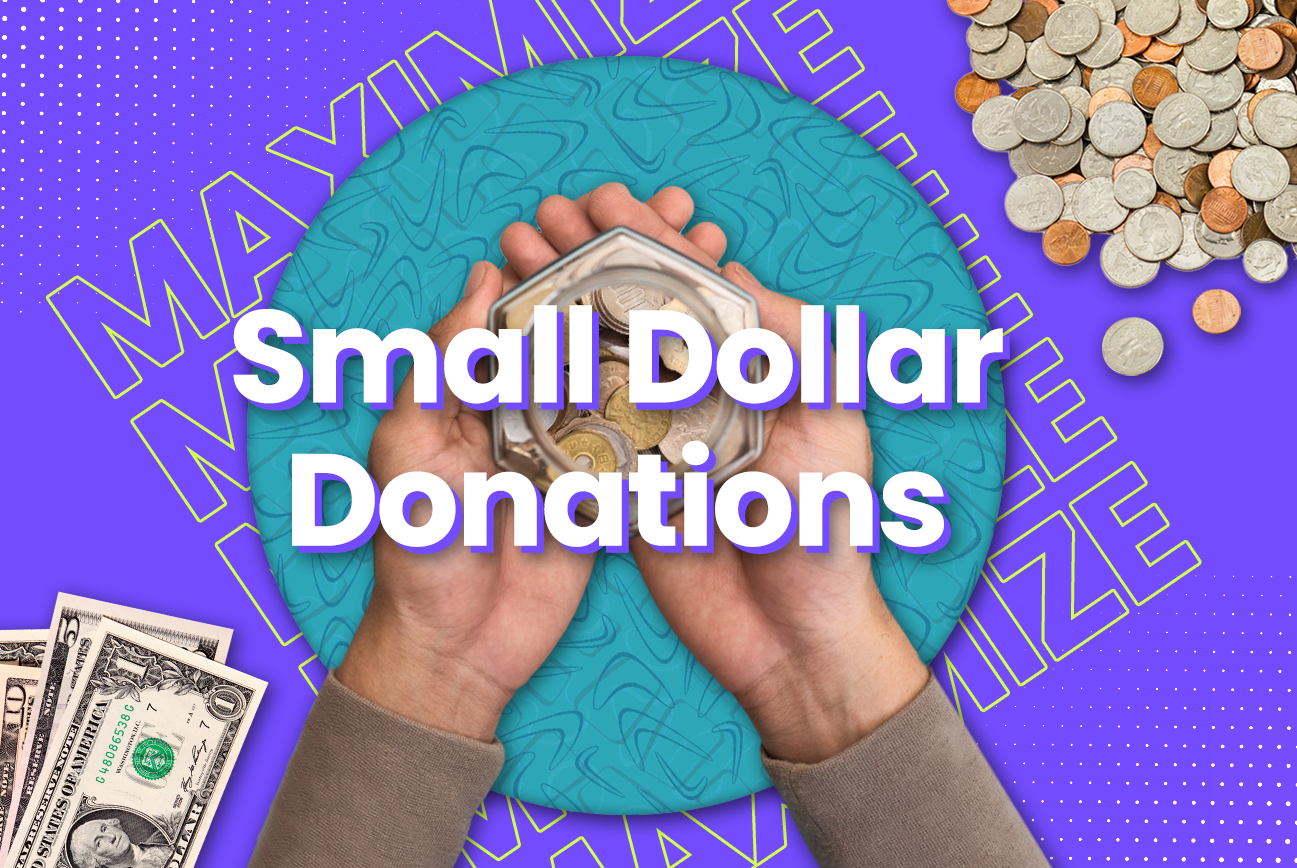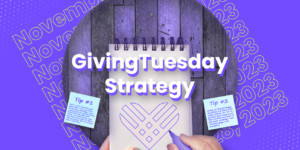You probably have a lot of ways to keep your high-level major donors happy and ready to give. But is your nonprofit also taking steps to make the most of small dollar donations?
As you know, the fundraising landscape is constantly evolving. And the number of smaller gifts has been declining since they peaked in 2020 during the pandemic.
In fact, donations under $100 are down 14.9 percent year-over-year, according to the latest data from the Fundraising Effectiveness Project.
Getting donors in the door.
Small donations of $5, $10, or $20 are a great way to get new donors familiar with your organization.
Giving just a few dollars takes minimal commitment on the donor’s end. But small gift donors can provide tremendous long-term value if you follow up effectively and grow relationships over time.
In fact, many donors now prefer to make a small test donation to see how a nonprofit responds before committing to a larger gift.
It’s impossible to know ahead of time. But there’s a chance the $5 donation you just received could be from a potential board member, employee, sponsor, or future major donor who wants to see how you respond to even the smallest gifts!

Small dollar donations for small projects.
Try thinking on a micro level if you want to use small dollar donations to acquire new donors.
Consider launching a separate campaign focusing on a smaller initiative. This way, even donors who contribute just a few dollars feel they are making an impact!
To start, think about all the things your annual fund covers. Take a small but tangible item from your annual budget and launch a digital campaign focused on that specific need.
If your nonprofit focuses on providing educational opportunities for students in underserved populations, focus a small donation appeal on a specific week-long after-school program.
In your appeal, you can make an ask like, “Please consider donating just $10 today, so we can reach our goal of $500 so students can attend this program at no cost to their families.”
This approach makes every donor’s gift feel valuable, no matter how much they give. It’s easy for donors to feel good about contributing just $5 or $10 when the goal is $500.
On the other hand, a donor who can only give $5 may not see the value of their gift if your goal is $10,000. They may decide their contribution doesn’t make enough of a difference and not donate at all.
READ MORE: The right way to compare dollars to impact.

Is it easy to give?
You need to make it easy for donors to give if you want to make the most of your small dollar donations. You don’t want to give potential donors any reason to rethink their decision.
So, it’s critical to make the process as smooth as possible.
Make sure you are keeping up with the latest trends in mobile optimization. Donors may decide their small dollar donation isn’t worth it if your donation page takes too long to load. It also needs to read well on a smartphone.
Don’t slow donors down by asking for field after field of information before they click “donate.”
Remember not to overlook the little things. For example, links in email appeals should lead directly to your online donation page. Don’t force potential donors to find their way there from your home page on their own.
And don’t forget to cut the clutter from your donation page!
Donors don’t need to be re-educated about your nonprofit’s work when they click a link to donate. Make sure any content on your online donation page directs donors towards completing their donation.
We know you have a lot to say about your nonprofit, your work, and your goals. However, including these messages on your donation page draws a donor’s attention away from the giving process. Save all that information for another page on your website.
Then, repurpose that content to use in your follow-up communications!
READ MORE: Does your nonprofit make it easy to give?
Let’s make it monthly!
A successful monthly giving program is the holy grail of small dollar donations. Your goal should always be turning a small, one-off donation into a lifetime of support.
This could mean increasing the average gift size of these donors over time. But your best bet may be getting them to make more of the small dollar donations they are already comfortable with.
So, consider reaching out to your small gift donors, especially those who gave more than once, and see if they would be interested in making their gift monthly. Explain the benefits of monthly giving for the donor and the organization. And be sure to let them know about any special perks, like an exclusive event, you offer for monthly donors.
READ MORE: Are you ready to launch a monthly giving program?

Don’t forget to follow up.
Someone who gives $5 to your organization for the first time should feel as special as someone whose first donation was $50.
We can’t stress the importance of following up on every gift with a heartfelt thank you. And you know you shouldn’t stop there.
It’s important to find creative ways to keep your audience engaged and ready to further their impact.
So, no matter how little someone gives, be sure to follow up quickly. Reach out to say thank you. Send them a digital version of your new donor welcome kit and annual report. Email them a survey to get more information and find out what inspired them to give.
And then stay in touch.
Supporters will feel like their small dollar donation didn’t matter to you if you don’t follow up with them effectively. So, make sure these donors know they have an important role in achieving your goal.
As we mentioned earlier, you never know who that $5 donation came from and what their true intentions might be. Failing to follow up on a small dollar donation could end up costing you thousands of dollars over time!
Want someone to talk through some ideas with? We’re here to chat!









